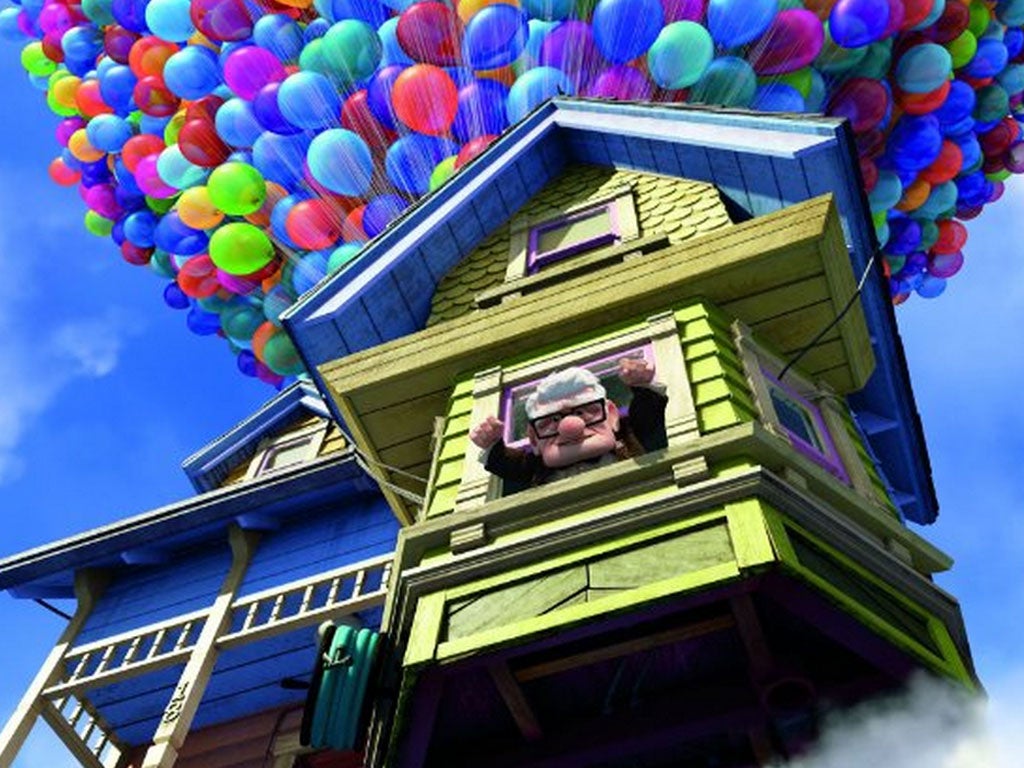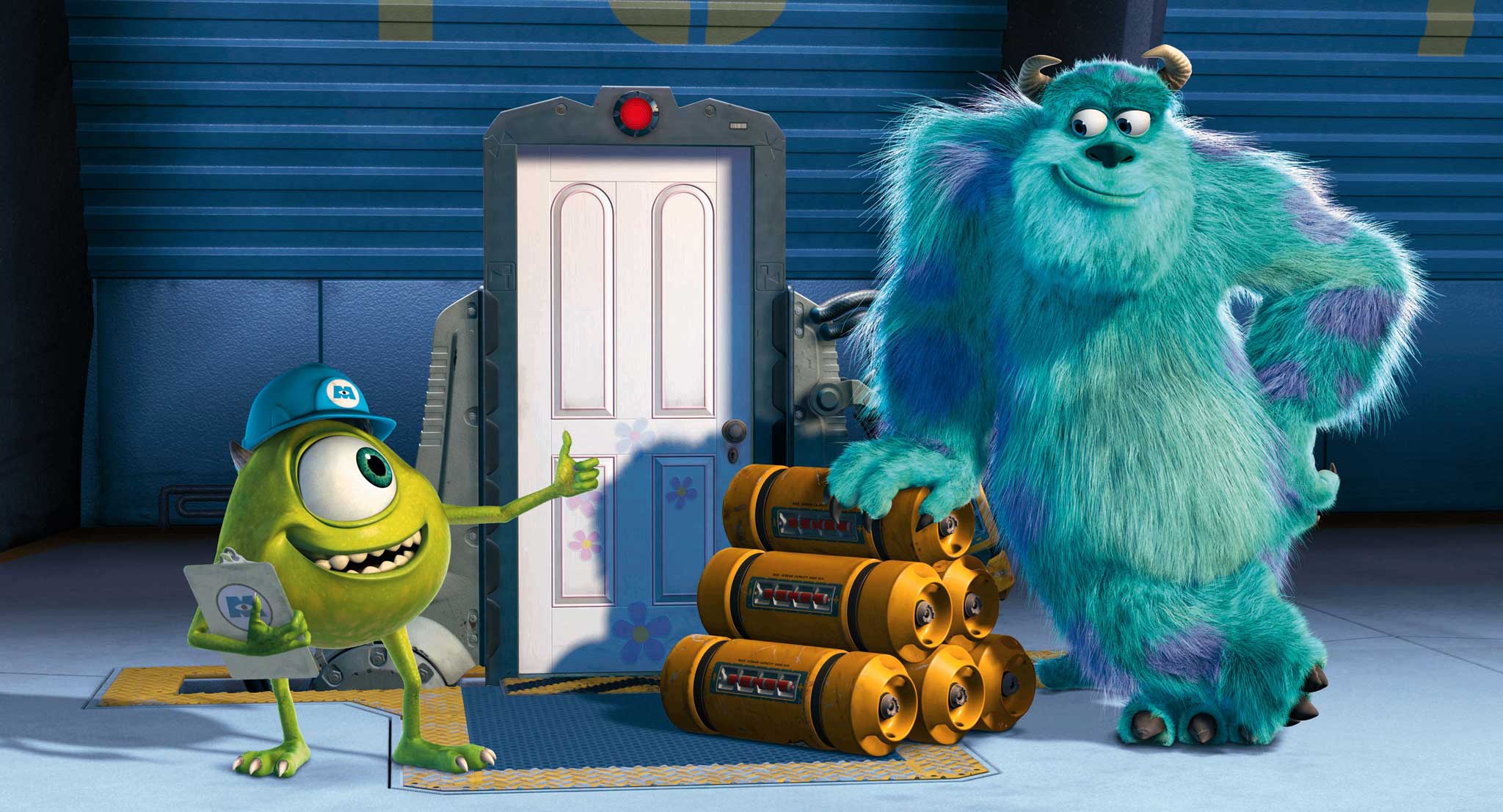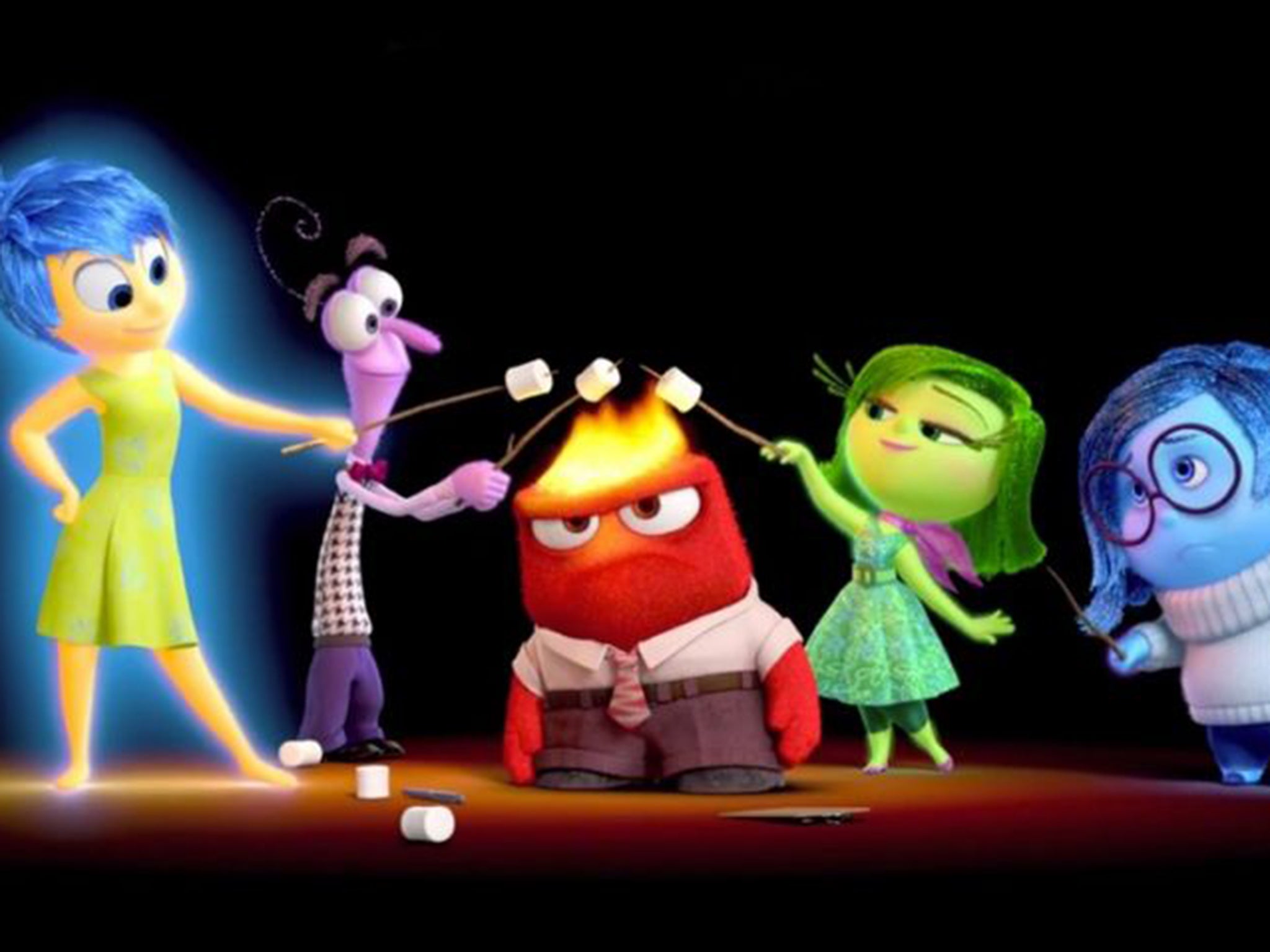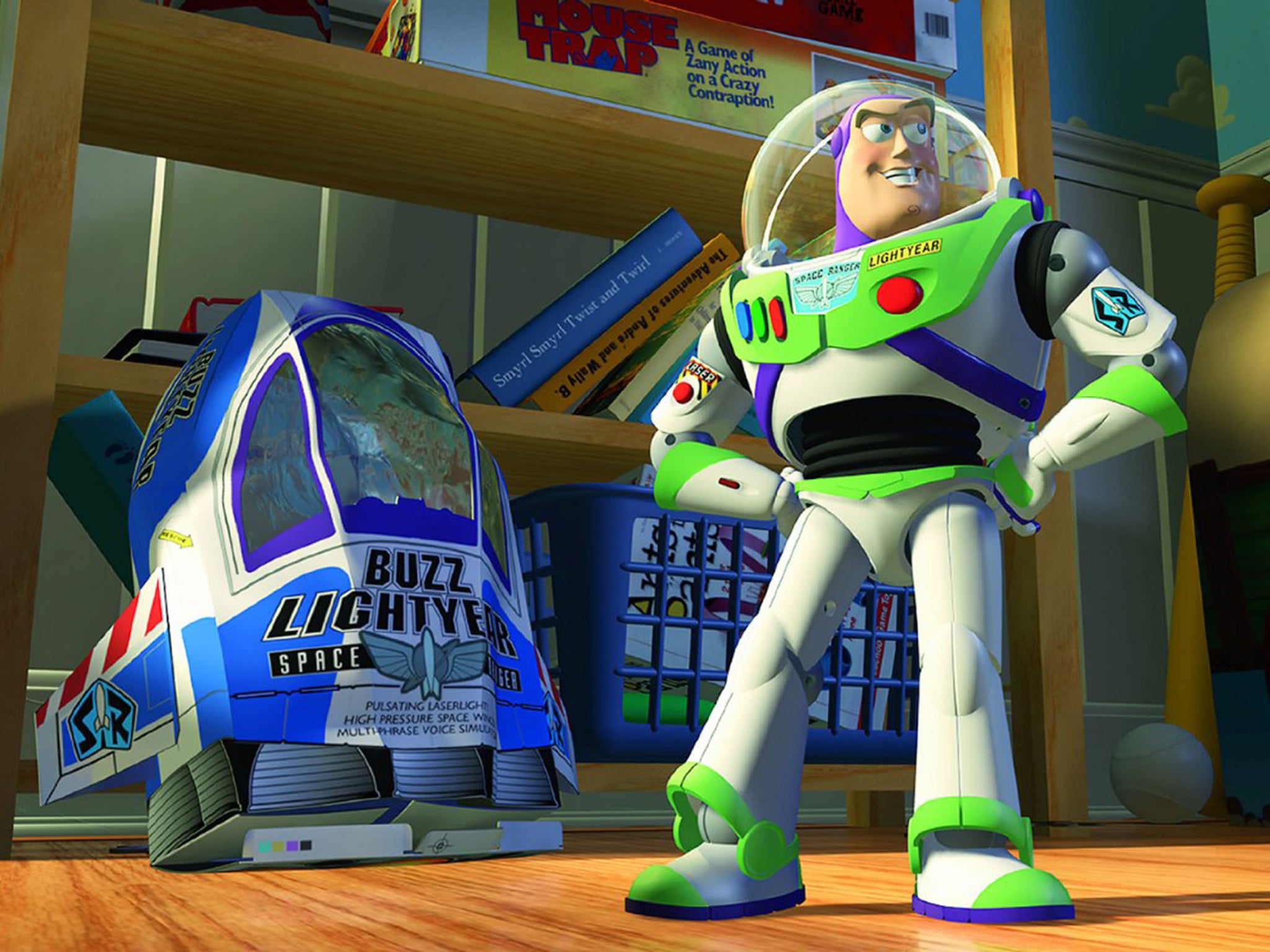Pete Docter interview: Meet the man behind Pixar's Monsters Inc, Up and Inside Out
'When we hit on the image of the house, I was like, ‘That’s where I want to be!''

Pete Docter is like a perfect cartoon character. Impossibly tall, with a reed-thin torso and bendy arms, his narrow-shaped head reminds you of a pencil-top eraser. The ears jut out, the eyes bulge and the smile is like a toothy portcullis. But while you can imagine his fellow animators at Pixar have a lot of fun drawing his caricature, it’s what’s inside his skull that’s most interesting. In a company that’s revolutionised animated storytelling with the likes of the Toy Story trilogy, Finding Nemo and Wall-E, the 46 year-old Docter might just be the most unique mind there is.
His last film, 2009’s Up, won Docter an Oscar for Best Animated Feature – with its story of Carl, an old man who ties balloons to his house to float away to South America. Even Docter admits it was a “bizarre” concept, albeit one he related to. “As a director, nobody told me I’d be talking to people all day,” he admits. “I’m naturally reclusive – I feel myself peek out at a certain point and go: ‘All the extrovert in me is done! I’m on reserve!’ So the idea of escaping everything and flying away … as soon as we hit on the image of the house, I was like, ‘That’s where I want to be!’”
Sitting in a seventh-floor hotel suite in Cannes, Docter may not relish pressing the flesh with the media but he copes well enough. It probably helps that the reception for Inside Out has been nothing short of sensational. We meet just after its world premiere on the Croisette, where the press screening concluded with a huge roar of approval. Since then, its $91m (£59m) first-weekend box-office take in the US was the highest-grossing opening haul ever for a non-sequel movie, while Variety declared “Pixar’s 15th feature proves to be the greatest idea the toon studio has ever had.”

It’s hard to disagree. Co-directed by Ronnie Del Carmen, a long-time Pixar storyboard artist, it’s an elegant brain-bender set inside the mind of an 11-year-old girl named Riley (voiced by Kaitlyn Dias). The principal characters are five emotions – Joy, Sadness, Disgust, Fear, and Anger – that all help Riley navigate events in her daily life from a control room when they dictate her consciousness. However that’s only one locale in a complex interior world, which includes areas such as Personality Islands, where Riley’s character traits are stored, and the unhinged Imagination Land, all linked by the high-speed Train of Thought.
If this is as philosophical and abstract as cartoons get, it’s nevertheless grounded in winning and accessible humour. The emotions are voiced by some of America’s leading comedians: Parks and Recreation’s Amy Poehler plays Joy; funnyman Bill Hader is Fear, stand-up Lewis Black is Anger and stars of the US’s version of The Office, Phyllis Smith and Mindy Kaling, play Sadness and Disgust. Their hilarious interaction, Docter admits, was particularly influenced by the wonderful chaos of Jim Henson’s The Muppet Show. “That definitely framed who I am and the type of characters I’m attracted to,” he says. “Really, all the Emotions are kind of like Muppets.”
With Riley’s mind coming on like the trippiest Disneyland you’ve ever seen, it’s a remarkable feat of world-building; made more so when it begins to collapse after Riley’s parents move her from an idyllic rural home to San Francisco, a traumatic event that causes an interior meltdown. Docter took his inspiration for Riley from his own daughter Elie, who previously voiced the character of young Ellie in Up. When Docter began working on Inside Out four years ago, Elie was 11. “She was going through a definite change, as we all do,” says Docter, who’d noticed how quiet she’d become.
It got him thinking about what it might be like to be inside a young girl’s mind, an idea that percolated until he took it to Pixar head, John Lasseter. “I pitched a very basic scenario of a kid about to raise her hand in school and then gave voice to the inner struggle,” he recalls. “You zip in, and the characters are going, ‘We know the answer!’ and then Fear goes, ‘What are you crazy? Did you see the way they judged that last kid when they got it wrong?! We’re not answering!’ So something as simple as ‘Should I raise my hand in class?’ became a major battle.”

Docter knows from personal experience just how difficult childhood can be. Born in Bloomington, Minnesota, he came from a highly musical family; his mother, Rita, taught music while his father, Dave, was a choral director at a community college. Raised with two younger sisters, now both professional musicians, the socially awkward Docter had no real interest in the family business. A natural-born loner, shy of company, he spent many hours alone, drawing cartoons to keep himself amused.
Echoing Riley’s experiences, his social discomfort got worse when his folks moved the whole family to Denmark, where his father was undertaking his doctorate. “I struggled mightily in Denmark to make friends,” he says. Then aged 10, he remembers watching one of his sisters, enviously. “She walked home literally with different kids holding on to every finger – she was the new kid everyone wanted to be friends with!”

Watch Apple TV+ free for 7 day
New subscribers only. £9.99/mo. after free trial. Plan auto-renews until cancelled.
ADVERTISEMENT. If you sign up to this service we will earn commission. This revenue helps to fund journalism across The Independent.

Watch Apple TV+ free for 7 day
New subscribers only. £9.99/mo. after free trial. Plan auto-renews until cancelled.
ADVERTISEMENT. If you sign up to this service we will earn commission. This revenue helps to fund journalism across The Independent.

His early years sound difficult, traumatic even. “There’s that bubble of childhood that makes you innocently do anything,” he says. “Then when you get older, that pops and you’re aware of limitations and judgement and social pressures and things like that.” After the family moved back to the States, Docter completed his schooling. He studied philosophy at the University of Minnesota for a year, before he transferred to the California Institute of the Arts to study film.
Once there, he began to flourish, creating shorts including Next Door, which won him a Student Academy Award in 1992 for its story about an old, square-headed grump and a neighbouring little girl, in what sounds like a blueprint for Up. The same year, Docter was recruited by Pixar, even skipping his graduation to start work at the one-time pioneering tech company that, back in 1990, had been stripped back to its animation division.
Thankfully, when Docter joined, Pixar had just signed its historic three-pic deal with Disney. Initially employed as an animator and co-writer on the company’s inaugural feature film, Toy Story (1995), he became a storyboard artist on A Bug’s Life and returned for story duties on Toy Story 2. “The way Pixar has been set up, it’s a really communal group effort but it’s also very personal,” he says.

In 2001, he made his directorial debut with Monster’s Inc. Nominated for an Oscar for Best Animated Feature Film, it earmarked Docter as one of Pixar’s brightest talents. Key to his brilliance is his guileless exuberance, says his co-director Del Carmen, who worked with him as the head of story on Up before joining him on Inside Out. “When you meet him, he’s essentially a very large child who enjoys being child-like.”
This playful spirit will doubtless be put to good use on the upcoming Toy Story 4, which Docter is again helping to co-write. But while he’s happy to yet again go back to the world of talking toys, he’s less convinced about a second trip inside Riley’s mind. “You’d really have to twist my arm,” he says. Perhaps it’s because his animated universes are real one-offs. “Part of the excitement for me is the discovering of these worlds,” he nods. “Strangely, when you look back, that’s the part that’s the most ulcer-inducing. But now, as we’re done, I kind of miss it!”
‘Inside Out’ opens on 24 July
Join our commenting forum
Join thought-provoking conversations, follow other Independent readers and see their replies
Comments